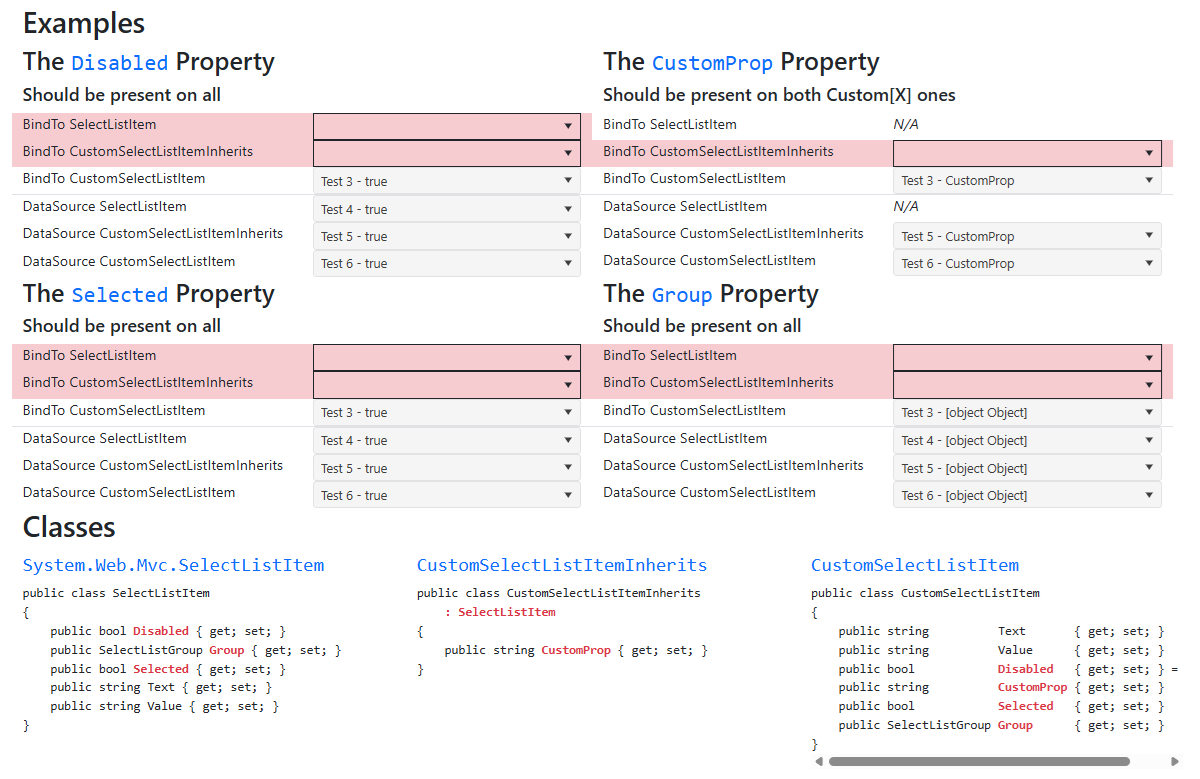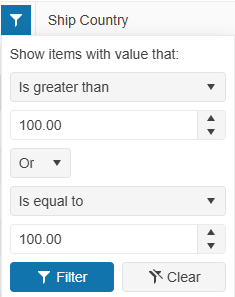The below exception is thrown when upgrading using latest Telerik UI for ASP.NET MVC extension.
Failed to execute command.
System.NotImplementedException: Not implemented (Exception from HRESULT: 0x80004001 (E_NOTIMPL))
at System.Runtime.InteropServices.Marshal.ThrowExceptionForHRInternal(Int32 errorCode, IntPtr errorInfo)
at Microsoft.VisualStudio.CommonIDE.Solutions.Dte.DteGenericProject.GetFileName()
at Telerik.VSX.Internal.VisualStudio.VisualStudioThreadHelper.<>c__DisplayClass1_0`1.<<RunInMainThread>b__0>d.MoveNext()
--- End of stack trace from previous location where exception was thrown ---
at System.Runtime.ExceptionServices.ExceptionDispatchInfo.Throw()
at System.Runtime.CompilerServices.TaskAwaiter.HandleNonSuccessAndDebuggerNotification(Task task)
at Microsoft.VisualStudio.Threading.JoinableTask.CompleteOnCurrentThread()
at Microsoft.VisualStudio.Threading.JoinableTask`1.CompleteOnCurrentThread()
at Telerik.VSX.NuGet.NuGetPackageService.GetInstalledPackage(Project project, String packageName, Boolean isPackageNamePartial, Boolean ignoreCapabilityMatchCheck)
at Telerik.VSX.Web.Helpers.ProjectWrap.GetMvcVersion()
at Telerik.VSX.Web.Helpers.ProjectWrap.CheckIsProjectSupported()
at Telerik.KendoUI.Mvc.VSX.Helpers.KendoUIMvcProjectWrap.CheckIsProjectSupported()
at Telerik.KendoUI.Mvc.VSX.Helpers.ProjectSearcher.FilterTelerikSupportedLanguageProjects(List`1 projectsList)
at Telerik.VSX.Internal.VisualStudio.VisualStudioThreadHelper.<>c__DisplayClass1_0`1.<<RunInMainThread>b__0>d.MoveNext()
--- End of stack trace from previous location where exception was thrown ---
at System.Runtime.ExceptionServices.ExceptionDispatchInfo.Throw()
at System.Runtime.CompilerServices.TaskAwaiter.HandleNonSuccessAndDebuggerNotification(Task task)
at Microsoft.VisualStudio.Threading.JoinableTask.CompleteOnCurrentThread()
at Microsoft.VisualStudio.Threading.JoinableTask`1.CompleteOnCurrentThread()
at Telerik.KendoUI.Mvc.VSX.Helpers.ProjectSearcher.GetTelerikEnabledProjectsByMainAssemblyMvcVersion(TargetMvcVersion mvcVersion)
at Telerik.KendoUI.Mvc.VSX.ProjectConfigurators.ProjectConfigurationTypeSelector.ShouldShowTargetMvcPage(TargetMvcVersion targetMvcVersion)
at Telerik.KendoUI.Mvc.VSX.ProjectConfigurators.ProjectConfigurationTypeSelector.GetProjectUpgradePreWizardData(IScenarioDef template)
at Telerik.KendoUI.Mvc.VSX.ProjectConfigurators.ProjectConfigurationTypeSelector.ProjectUpgrade(IPropertyDataDictionary additionalPreWizardData)
at Telerik.KendoUI.Mvc.VSX.ProjectConfigurators.StreamlinedProjectConfiguration.StartUpgradeWizard()
at Telerik.VSX.VSPackage.PackageBase.CommandCallback(Object sender, EventArgs e)
Hello Telerik team,
I have a PivotGrid v2 in my Home/Index view, and I would like to achieve the following behavior:
I want users to be able to drag the available fields into the Rows or Columns sections — just like in the classic Kendo UI PivotGrid, where fields remain selectable and can be freely dragged to the desired area (rows or columns).
Currently, the PivotGrid v2 does not seem to allow this kind of flexible drag-and-drop interaction.
Could you please let me know if there is a configuration or example that enables this behavior?
Attached is an example project, where dragging is not allowed.
Thank you very much for your help and guidance.
Best regards,
Pablo
Dear Telerik Support Team,
We are currently using the Telerik framework extensively in one of our projects — including grids, controls, calendars, and other components. Our experience so far has been excellent, and our goal is to fully adopt Telerik across our entire solution.
The only component we have not yet been able to fully migrate is the PivotGrid. We are currently using the DevExpress PivotGrid, but we would like to switch to Kendo PivotGrid, as we consider it to be a very powerful and modern development tool within your ecosystem.
However, during the migration process, we noticed a visual behavior that is not exactly an inconsistency but something we would appreciate your guidance on:
When building a PivotGrid with Telerik (using Kendo().PivotGrid() and an AJAX DataSource, not XMLA), the row field names are displayed inside an additional column. This layout increases the overall width and creates unused blank space.
In contrast, DevExpress displays the row field names above the related data block as a header, which helps make better use of the available space (please see attached images telerik.png and devexpress.png for reference).
We would like to know if there is a recommended way, configuration, or possible workaround to achieve a similar layout in Telerik’s PivotGrid, or if such a feature is being considered in the product roadmap.
Another property is showTotals in order to don´t show totals.
Thank you in advance for your assistance. We look forward to your response.
When binding a dropdown to a list (with .BindTo()) instead of a DataSource, none of the object's properties besides "Text" and "Value" are available in the Template, and will throw a ReferenceError that the property is not defined.
But this only occurs if the list of items it is bound to is of the type SelectListItem, or inherits from that type.
If the list is of items that do not inherit from SelectListItem, then all properties can be used in the Template with no error.
Screenshot of example project output:
Explanation:
Each dropdown on the page has a .Template() which simply displays the "Text" property and one other property (listed in each section's heading). Example:
"#= Text # - #= Disabled #"
If the property is not working correctly, a unhandled ReferenceError will occur and the dropdown will fail to initialize. These failed rows are highlighted red.
This only occurs when the dropdowns use .BindTo() and a list of either SelectListItems or of a class that inherits from SelectListItem. The dropdowns bound to lists of CustomSelectListItem, which does not inherit, have no issue with the additional properties.
This bug has been occurring since at least 2021.3.1109, but I confirmed is still present in the latest version.
TextBox is always with autocomplete="off".
I know I can handle it by $(el).attr("autocomplete", "whatever"), but I think there should be an option how to handle autocomplete attribute on TextBox widget (and other widgets if any renders in the same way), because adding that part of code to all of desired elements is not nice solution for me...
Thanks!
### Bug report
When filtering a specified Grid column, the filter expressions are inverted when the value of the first expression is empty/null.
### Reproduction of the problem
1) Filter a Grid column by leaving the first filter value empty:
2) Filter the Grid and open again the filter menu. The filter expressions are inverted:
A Dojo sample for reproduction: https://dojo.telerik.com/CXChcTJT
### Expected/desired behavior
The filter menu expressions must remain the same.
### Environment
* **Kendo UI version: 2025.2.702
* **jQuery version: 3.7.0
* **Browser: [all]
@Html.Kendo().RadioGroupFor(m => m.UserType).LabelPosition(RadioGroupLabelPosition.After).Layout(RadioGroupLayout.Vertical).Items(item =>
{
item.Add().Label("Test1").Value("Test1");
item.Add().Label("Test2").Value("Test2");
item.Add().Label("Test3").Value("Test3");
})
@Html.ValidationMessageFor(m => m.UserType, "", new { @class = "text-danger" })
The above code shows required validation for UserType from server side properly. ( UserType variable decorted with Required )
However from client side it does NOT. Unfortunately I cannot use (form).KendoValidator()
In many applications we use passwords. Would love to have a field that allows for the setting of a type to "password" without templates.
.PasswordTextField() or something similar.
**Added by Admin**
If I pass in the model, the fields should get affected by the `DataType(Datatype.Password)` data annotation attribute.
Hi Team,
I would like to request to add Building Blocks and Page Templates for UI for ASP.NET MVC/Core.
Thank you!
Bug report
In a state persistence scenario, the Grid state is not properly restored when the "all" pageSizes option is selected.
Reproduction of the problem
- Run this dojo example: https://dojo.telerik.com/yGLYKKQz
- Select "all" in the Grid's pager dropdown and click the Save button above the component.
- Select a different page size option in the pager dropdown, e.g., 20.
- Click the Load button.
Current behavior
The Grid shows page 1 of the data and the currently selected page sizes option is shown (e.g., 20).
Expected/desired behavior
The Grid shows all the data and the pager dropdown shows "all" as the selected value.
Environment
- Kendo UI version: 2024.4.1112
- Browser: All
// retrieve the Editor widget object
var editor = $("#editor").data("kendoEditor");
// attach a click handler on the tool button, which opens the ImageBrowser dialog
editor.toolbar.element.find(".k-i-image").parent().click(function () {
// a setTimeout is required, otherwise the ImageBrowser widget will still not be initialized
setTimeout(function () {
// retrieve the ImageBrowser widget object
var imageBrowser = $(".k-imagebrowser").data("kendoImageBrowser");
console.log(imageBrowser);
// retrieve the ListView widget object
var listView = imageBrowser.listView;
console.log(listView);
// order the image list by directory first and then by file name
listView.dataSource.sort({
field: "type", dir: "asc", compare: function (a, b) {
if (a.type!=b.type) {
return (a.type > b.type) ? 1 : -1;
}
else {
return a.name === b.name ? 0 : (a.name > b.name) ? 1 : -1;
}
}
});
});Hi Team,
I would like to request the UI for ASP.NET MVC Editor's ImageBrowser include a schema similar to the Kendo UI for jQuery version to describe the raw data format. This would additionally help the transition from the JavaScript version to the MVC version.
Thank you!
Is it possible to implement a MaxLength() option in the Filterable(f => f.Cell()) configuration that will set the maxlength attribute to the Filter row element in order to limit the length of the string that the user can enter into the Filter row input?
For example:
@(Html.Kendo().Grid(Model)
.Name("grid")
.Columns(columns =>
{
columns.Bound(x => x.Name).Filterable(ftb => ftb.Cell(c => c.MaxLength(5)));
})
...
)
Bug report
The jQuery dependency is defined as follows in the package .nuspec file:
<dependency id="jQuery" version="(, 3.7.1]" />
This causes the following warning to appear when installing the package in a project:
Telerik.UI.for.AspNet.Mvc5 2024.3.1015 does not provide an inclusive lower bound for dependency jQuery (<= 3.7.1). jQuery 1.4.1 was resolved instead.
The affected packages are:
Telerik.UI.for.AspNet.Mvc5
Telerik.UI.for.AspNet.Mvc5.Trial
Reproduction of the problem
Install the Telerik.UI.for.AspNet.Mvc5 package in a project and check the warnings list.
Current behavior
Warning:
Telerik.UI.for.AspNet.Mvc5 2024.3.1015 does not provide an inclusive lower bound for dependency jQuery (<= 3.7.1). jQuery 1.4.1 was resolved instead.
Expected/desired behavior
Add a lower bound (https://learn.microsoft.com/en-us/nuget/reference/errors-and-warnings/nu1604) to resolve the warning about the jQuery dependency.
Environment
- Kendo UI version: 2024.3.1015
- jQuery version: x.y
- Browser: [all]
System.NullReferenceException: Object reference not set to an instance of an object.
at Telerik.KendoUI.Mvc.VSX.Wizards.ViewModels.MvcDistributionChooserUpgradeViewModel.GetProjectWithLowestTargetFramework(List`1 projects)
at Telerik.KendoUI.Mvc.VSX.Wizards.ViewModels.MvcDistributionChooserUpgradeViewModel.GetDistributions()
at Telerik.VSX.ViewModels.DistributionChooserViewModelBase`1.get_Distributions()
at Telerik.VSX.ViewModels.DistributionChooserViewModelBase`1.get_CurrentDistribution()
at Telerik.KendoUI.Mvc.VSX.Wizards.UpgradeProjectWizard.TryGetDistributionToken(TargetMvcVersion mvcVersion)
at Telerik.KendoUI.Mvc.VSX.Wizards.UpgradeProjectWizard.GetPropertyValue(String propertyName)
at Telerik.VSX.WizardEngine.Controls.WizardControlBase.PopulateCollectedValues(IPropertyDataDictionary gatheredData)
at Telerik.VSX.WizardFramework.Pages.DynamicPageController.GetData()
at Telerik.WizardFramework.Wizard.GetCurrentPageData()
at Telerik.WizardFramework.Wizard.UpdateNavigation()
at Telerik.WizardEngine.Helpers.EventHelper.CatchExceptionAndSendReport(Action action)
@(Html.Kendo().Grid<VIP_Logic.Models.Dashboard.CriteriaModel>().Name("dgdCriteria")
.Columns(column =>
{
column.Bound(b => b.ParamIndex).Title("No.").Width(40);
column.ForeignKey(b => b.ColumnName, (IEnumerable<SelectListItem>)ViewBag.LstColumnNames, "value", "text").HtmlAttributes(new { style = "text-align: left", onChange = "onChangeColumn('#=ParamIndex#');" }).Title("Column").Width(100);
column.ForeignKey(b => b.Operator, (IEnumerable<SelectListItem>)ViewBag.LstOperators, "value", "text").HtmlAttributes(new { style = "text-align: left", onChange = "onChangeOperator('#=ParamIndex#');" }).Title("Operator").Width(100);
column.Bound(b => b.ParamValue).HtmlAttributes(new { style = "text-align: left", onChange = "setCriteriaXml();" }).Title("Value").Width(150).Encoded(false);
column.Bound(b => b.ParamIndex).ClientTemplate("<button class= 'k-button' type='button' onclick=onRemoveCriteria('#=ParamIndex#')>" + "Remove" + "</button>").HtmlAttributes(new { style = "text-align: center" }).Title(string.Empty).Width(50);
})
All the function in onchange attribute required a parameter ParamIndex. In old version, the syntax "#=ParamIndex#'" still work fine, but since i upgrade Kendo UI to latest version, this syntax doesn't work anymore. How can i make it work like old version?
Hi Team,
I would like to request a way to bind a Kendo UI Template to a UI for ASP.NET MVC CheckBox HtmlHelper. At the moment, it only accepts a boolean, so a string template will not work as expected.
Thank you!
Bug report
Reproduction of the problem
- Run this dojo example: https://dojo.telerik.com/EpOWEPoz/3
Current behavior
The Test1 event is rendered too short (compare it to the other 2 events). This happens only with certain majorTick values, e.g., 660 or 600.
Expected/desired behavior
Correct event rendering
Environment
- Kendo UI version: 2024.2.514
- jQuery version: x.y
- Browser: [all]




